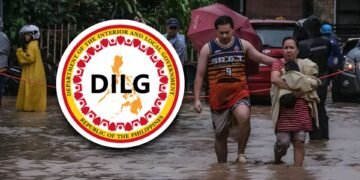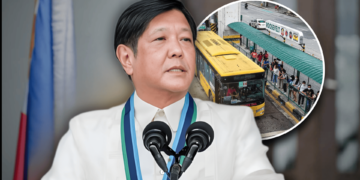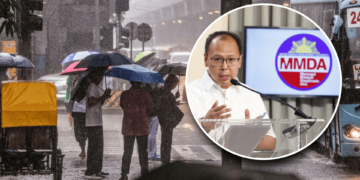When Ferdinand “Bongbong” Marcos Jr. vowed in 2022 to bring rice prices down to ₱20 per kilo, it was more than a campaign line.
It was a call to the most sacred corner of every Filipino kitchen. Forget tax cuts or foreign policy—this was about lunch. Rice isn’t just a side dish here; it’s emotional infrastructure.
And Marcos? He promised to reinforce it with a price tag that sounded almost magical.
Now, three years into his presidency and fresh off his 2025 State of the Nation Address (SONA), we have to ask: did he actually do it? Or was the ₱20 dream a political calorie bomb—tasty, filling, but nutritionally hollow?
Let’s dig in.
Marcos says yes: “We did it. It’s real.”
In his 2025 SONA, President Marcos proudly announced that his government “has proven that ₱20 rice can be offered without causing losses to farmers”.
He listed locations—San Juan, Pangasinan, Cebu, Davao del Sur—where the rice was reportedly being sold through KADIWA ng Pangulo stores. These are government-backed retail hubs that partner with local governments to sell goods directly to the public, cutting out middlemen and keeping prices down.
To scale it, he pledged a hefty ₱113 billion budget for the Department of Agriculture, aimed in large part at expanding these KADIWA outlets across the country (Inquirer). So if we’re just checking off boxes, yes: in specific areas, with very specific rules, ₱20 rice exists.
But hold that confetti.
KADIWA works—but only in the way a fire extinguisher works
KADIWA rice is a subsidized product.
The National Food Authority (NFA) buys palay (unmilled rice) from farmers at higher-than-market rates, mills it, and sells it at a loss. The difference? That’s covered by taxpayers. It’s not a market price—it’s a state-engineered price point delivered in neatly packed 5kg bags to pre-approved beneficiaries like 4Ps members, seniors, and solo parents.
It’s rationed, heavily monitored, and not available to everyone. Think of it as emergency rice, not everyday rice.
And if you’re not near a KADIWA outlet? You’re still paying ₱41–₱45 per kilo, according to mid-2025 retail monitoring by the Philippine Statistics Authority.
That’s twice the campaign promise.
The market price hasn’t caught up—and probably never will
In the open market, ₱20 rice is economically impossible—at least without wrecking someone’s bottom line. Production costs for palay range from ₱11 to ₱15 per kilo, even before milling, transport, and markups. Sell it at ₱20, and either the farmer starves, or the government bleeds.
Some experts believe it’s already bleeding.
Dr. Teodoro Mendoza of UP Los Baños calls the ₱20 rice program “a disaster for farmers.” He claims farmgate prices for palay have dropped to as low as ₱8–₱12 per kilo, driven down by a market suddenly flooded with artificially cheap, state-backed rice.
Yes, rice got cheaper—but someone paid for it. And that someone wasn’t just the government. It was the farmers.
Cheap rice has a political cost: resentment in the fields
In July 2025, as the President praised his affordable rice achievement in Congress, farmer groups were marching in protest outside. Activists at the “People’s SONA” called it a “band-aid solution” and accused the administration of painting over deeper problems like land reform, mechanization, and rising input costs.
They’re not wrong to be worried.
When cheap imports or subsidies distort the market, farmers become disincentivized to plant. Less domestic supply means higher dependency on imports, which makes food security vulnerable to global shocks. Just ask India, which had to suspend rice exports after weather-related crop failures. Or the Philippines itself during the 2008 rice crisis.
Even IBON Foundation, a local economic think tank, warned that if the government’s agri-budget continues to hover under 4% of the total national budget, “token programs” like ₱20 rice won’t lead to structural change.
A single harvest subsidy doesn’t fix decades of decay.
Inflation is down—but is that because of Marcos or the monsoon?
To be fair, rice inflation in the Philippines has cooled in 2025. From as high as 8.7% in early 2023, it now sits below 2%. President Marcos took credit during his SONA, citing tariff cuts, increased NFA purchases, and expanded KADIWA presence.
He has a case. The administration slashed rice import tariffs to 15% under Executive Order No. 62, which helped drive down local prices by flooding the market with over 2.3 million metric tons of rice imports in just seven months.
But so did seasonal harvests, favorable weather, and a globally improving commodity environment.
In other words, some of this was Marcos. Some of it was Mother Nature. The tricky part is proving which did more.
Voters wanted magic. What they got was logistics.
For ordinary Filipinos, the ₱20 promise was never about NFA policy or global grain trends. It was about the dream of walking into a palengke, handing over a purple bill, and walking away with five kilos of rice.
And in some places, under some conditions, that dream has come true.
But for most? They’re still waiting. KADIWA stores are expanding, but slowly. Supplies are limited. Eligibility is selective. And even supporters admit it may take another two to three years before ₱20 rice becomes widespread—if ever.
So is it a win? Technically yes. Is it a fail? Also yes. It depends where you live, how much you earn, and what you’re willing to settle for.
A political promise that became a national experiment
Marcos didn’t just promise cheaper rice—he promised a new model of how government could directly intervene in the economy to solve everyday problems. KADIWA, in that sense, isn’t just about food. It’s about narrative control.
It’s proof that if you shout a number loud enough and fund it hard enough, reality can bend—at least for a while.
But sustaining it will require more than speeches. It will demand serious money, real reforms, and political will beyond the next election.
Because rice may be cheap for now. But broken trust? That’s expensive.












